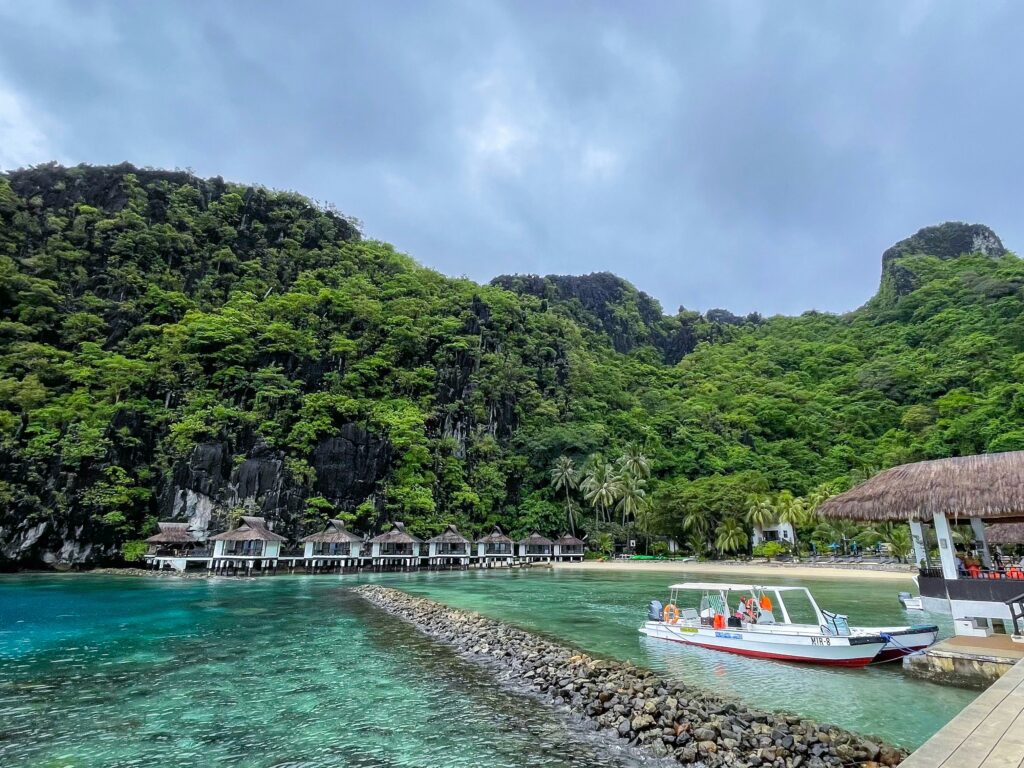It is necessary to address the impact of climate change on biodiversity in the Philippines as it poses significant threats to the country’s unique ecosystems and species, jeopardizing their survival and ecological balance.

PHOTO: John Hernandez on Unsplash
The Philippines is facing significant threats to its biodiversity due to the impacts of climate change. As one of the world’s most vulnerable countries to climate change, the Philippines is experiencing rising temperatures, changing rainfall patterns, more frequent extreme weather events, and rising sea levels. These changes directly affect the country’s ecosystems.
The disruption of the ecosystems in the Philippines poses a grave risk to its remarkable biodiversity, which is home to numerous endemic species. The complex interplay between climate change and biodiversity loss requires urgent attention and proactive measures to mitigate the impacts and protect the invaluable natural heritage of the Philippines.
Climate Change in the Philippines
Climate change is widely recognized as one of the most profound and pressing challenges confronting the Philippines. Its adverse impacts are already being observed, and without concerted efforts to reduce further emissions of greenhouse gases, these impacts are projected to escalate exponentially over time.
The Philippines experiences an increasing frequency of extreme weather events, including powerful typhoons, severe flooding, and prolonged droughts. These events result in substantial economic losses, damage to infrastructure, and loss of lives.
As global temperatures rise, sea levels are also increasing, threatening the low-lying coastal areas of the Philippines. Coastal erosion, saltwater intrusion, and the loss of valuable coastal habitats put communities, ecosystems, and livelihoods at risk.
The agricultural sector, which employs a significant portion of the population, faces significant challenges due to climate change. Erratic rainfall patterns, prolonged droughts, and increased pest outbreaks disrupt crop production, leading to food insecurity and economic instability.
Moreover, the biodiversity of the Philippines is gravely affected. Climate change disrupts ecosystems, impacting biodiversity through habitat loss, altered migration patterns, and increased species extinction risks.
Impacts of Climate Change on Biodiversity

PHOTO: Jules Bassoleil on Unsplash
The impacts of climate change on biodiversity in the Philippines are becoming increasingly evident. Urgent action is needed to protect the country’s unique ecosystems and the myriad species they support.
Coral Reefs Under Threat
The warming of ocean temperatures due to climate change poses a severe threat to the Philippines’ vibrant coral reefs. Rising sea temperatures lead to coral bleaching, a process in which corals expel their symbiotic algae, causing them to turn white and become more susceptible to disease and death. Additionally, increased carbon dioxide absorption by oceans results in ocean acidification, which inhibits the growth of coral reefs and other marine organisms with calcium carbonate shells.
Precipitation Patterns Disrupted
Climate change affects rainfall patterns, leading to irregular and extreme precipitation events in the Philippines. Prolonged droughts and intense rainfall can disrupt the delicate balance of ecosystems, affecting both terrestrial and freshwater habitats. Changes in precipitation patterns can lead to habitat loss, altered vegetation dynamics, and shifts in species composition, threatening the survival of endemic plants and animals.
Species Struggle to Adapt
As temperatures rise, many species in the Philippines may face challenges in adapting to new climatic conditions. Some species may be forced to shift their ranges to higher elevations or migrate to more suitable habitats, potentially resulting in the loss of local populations. This disruption in species distribution can have cascading effects on ecosystem dynamics, including changes in predator-prey relationships and competition for resources.
Conservation and Adaptation Strategies
As a country highly vulnerable to the impacts of climate change, the Philippines has taken significant strides in implementing climate change adaptation strategies. The government, alongside non-governmental organizations (NGOs), has been actively engaged in addressing the challenges posed by a changing climate.
Government and NGOs Unite: Addressing Climate Change Vulnerability
One project is the “Adaptation to climate change and conservation of biodiversity” which was commissioned by the German Federal Ministry for the Environment, Nature Conservation and Nuclear Safety (BMU).
The initiative provided assistance to the Philippine Department of Environment and Natural Resources (DENR), government agencies, local authorities, and NGOs in formulating and executing strategies to counteract the adverse effects of climate change and biodiversity loss. These efforts encompassed the provision of guidance and training sessions to aid partner institutions in adapting to climate change.
Furthermore, steps were taken to assist project partners in preserving biodiversity, including enhancing the monitoring of protected areas and supporting initiatives for rehabilitating mangroves. The project also facilitated knowledge sharing and public awareness campaigns on climate change and other environmental concerns in collaboration with the DENR and other partners.
Implementation of the National Strategy on Climate Change Adaptation
Part of the result was the implementation of the National Strategy on Climate Change Adaptation in the Philippines in 2010. This strategy now acts as a comprehensive guideline for the country’s adaptation efforts and plays a crucial role in the National Framework Strategy on Climate Change and the 2011–2028 National Climate Change Action Plan.
The project has played a key role in delivering climate-proofing training to numerous local experts and government officials working for Philippine authorities. This training has enabled them to develop development plans, programs, and local investments that are less susceptible to the adverse impacts of climate change.
How Can We Mitigate the Impact of Climate Change
To mitigate the impact of climate change, it is essential to reduce greenhouse gas emissions through a combination of strategies. This includes transitioning to renewable energy sources, improving energy efficiency, and adopting sustainability measures. Additionally, raising awareness is crucial in driving collective action and achieving meaningful climate change mitigation.
How BillionBricks Net-Zero Homes Contribute to our Transition to a Greener Future
The concept of net zero refers to achieving a state where the amount of greenhouse gases released by human activities is offset by the amount of emissions reduction efforts implemented.
Achieving net zero requires significant effort and investment in areas such as renewable energy and sustainable practices across various industries and sectors. Net-zero homes are one of the cutting-edge solutions that can help us achieve this goal.
BillionBricks net-zero homes are designed to have minimal energy consumption and generate all the energy needed for home use.
Reduced Reliance on Fossil Fuels for Energy
BillionBricks net-zero homes have integrated solar roof panel technology that generates clean energy on-site, eliminating its reliance on fossil fuels, which helps lower the overall carbon footprint.
The reduced energy demand indirectly mitigates pollution and greenhouse gas emissions. The effects of greenhouse gas emissions contribute to climate change, which has interconnected effects on marine ecosystems through rising sea levels, ocean acidification, and changes in ocean currents.
If you want to learn more about BillionBricks and our net zero homes, email us at: hello@billionbricks.org!
Sources
-
PAGASA. (n.d.). Climate Change in the Philippines. Retrieved from https://www.pagasa.dost.gov.ph/information/climate-change-in-the-philippines
-
NICCDIES. (n.d.). Climate Change Impacts. Retrieved from https://niccdies.climate.gov.ph/climate-change-impacts
-
The Maritime Review. (2021). How is the Philippines doing with Climate Change and its Impact on Biodiversity? Retrieved from https://maritimereview.ph/how-is-the-philippines-doing-with-climate-change-and-its-impact-on-biodiversity/
-
Climate Laws. (n.d.). Philippine Strategy on Climate Change Adaptation. Retrieved from https://climate-laws.org/documents/philippine-strategy-on-climate-change-adaptation_8423
-
GIZ. (n.d.). Adaptation to climate change and conservation of biodiversity. Retrieved from https://www.giz.de/en/worldwide/18280.html


